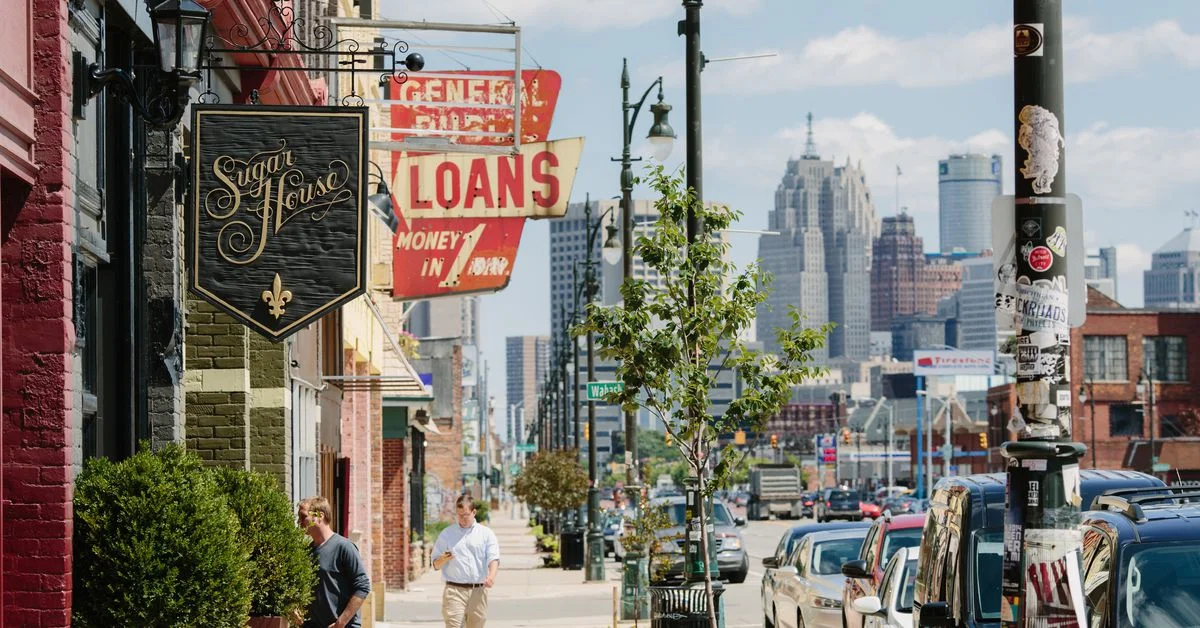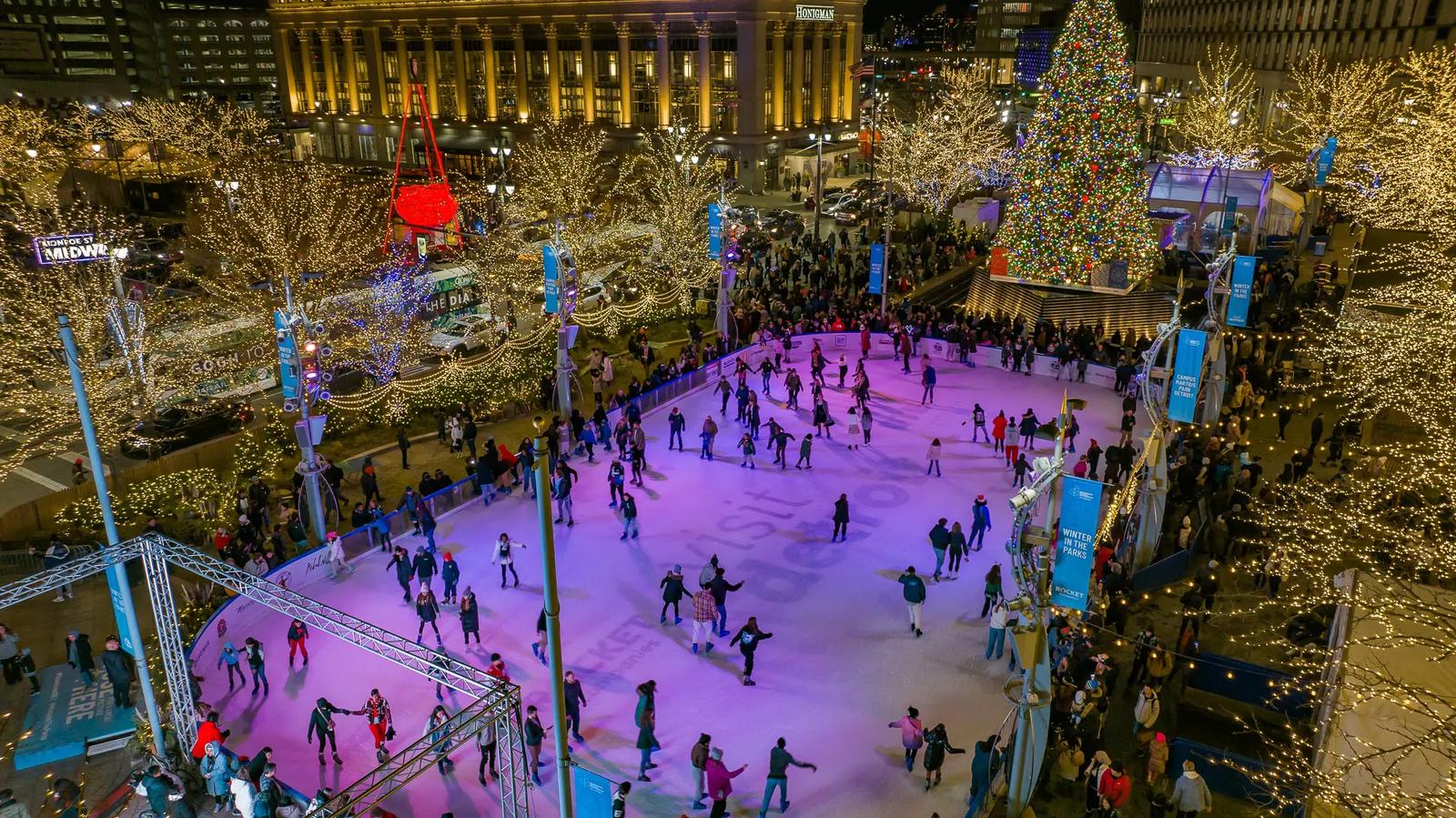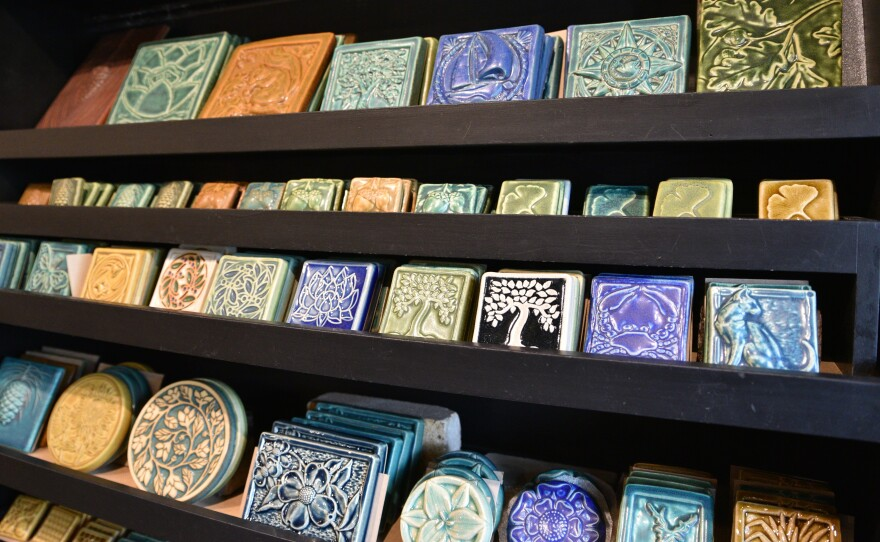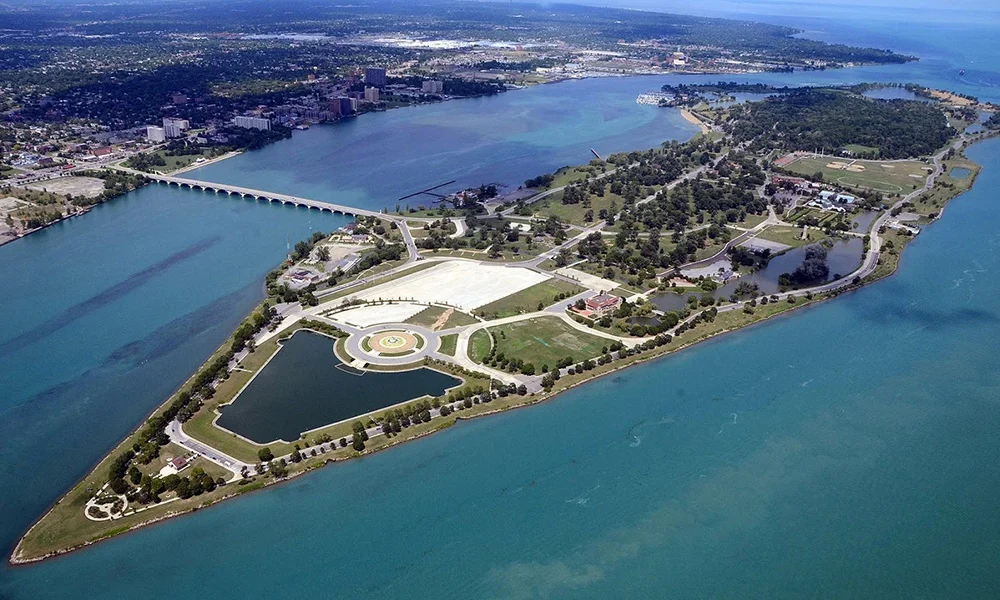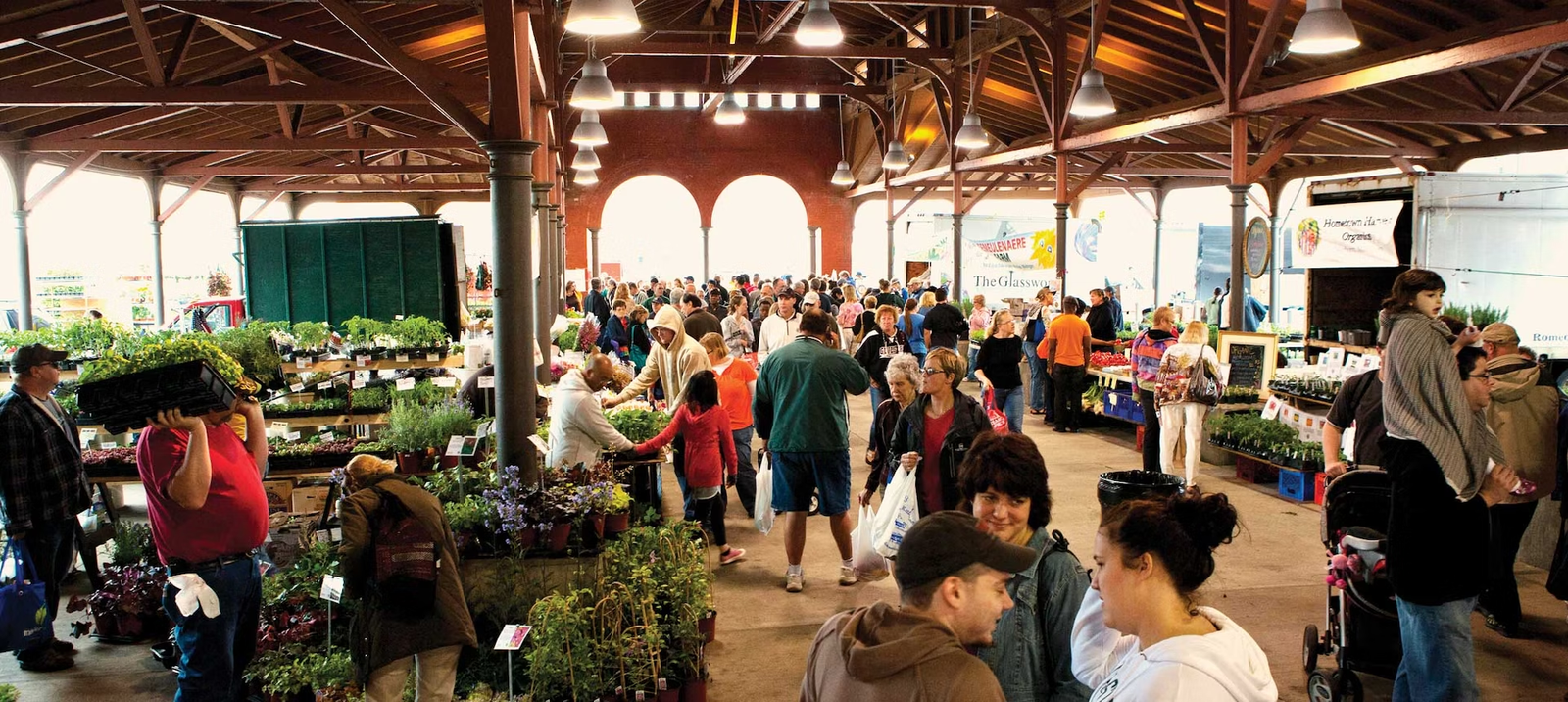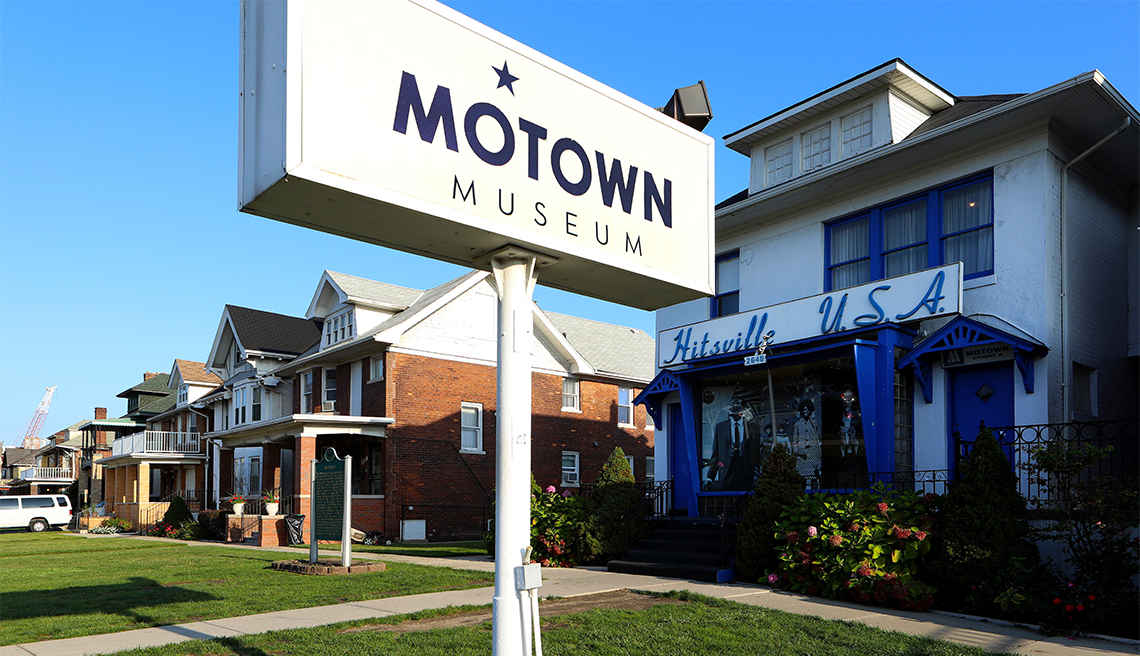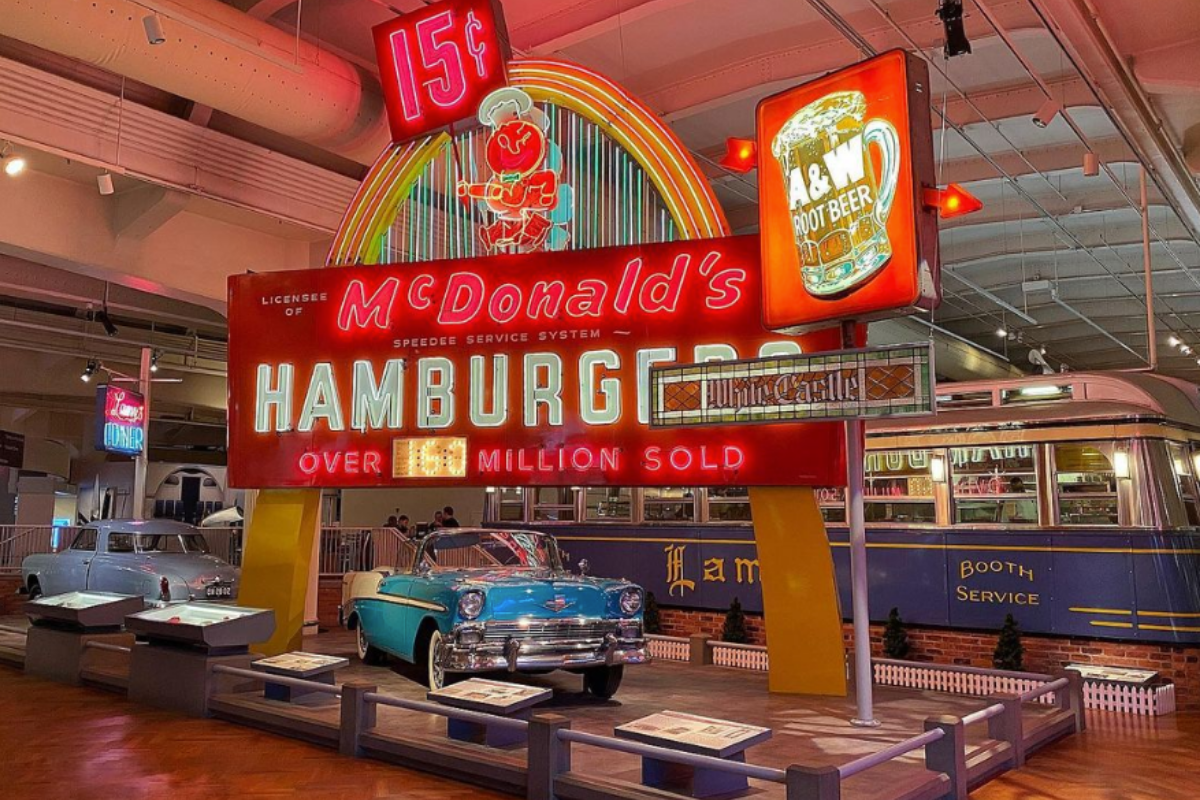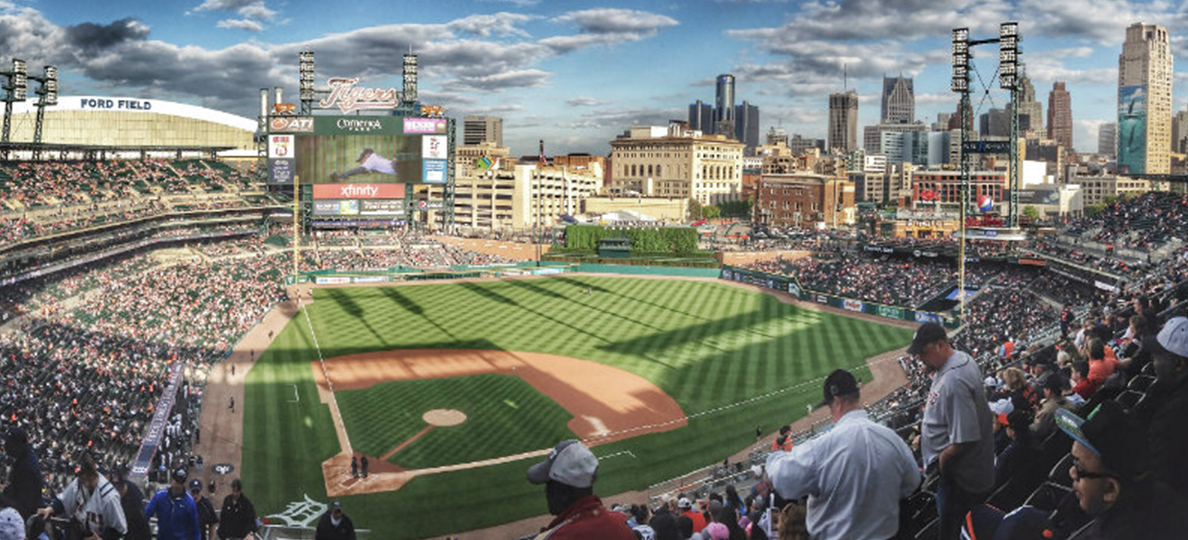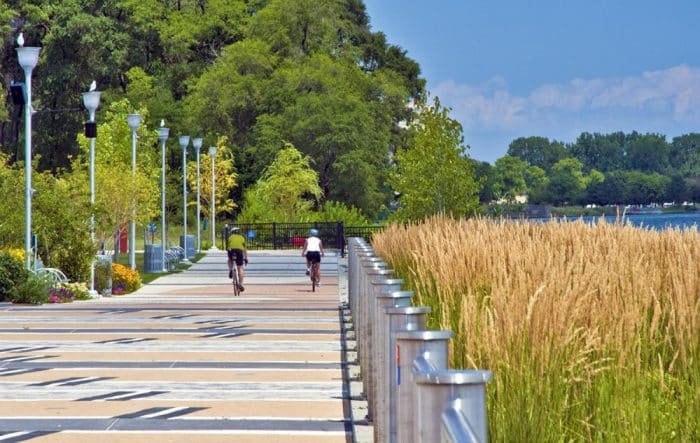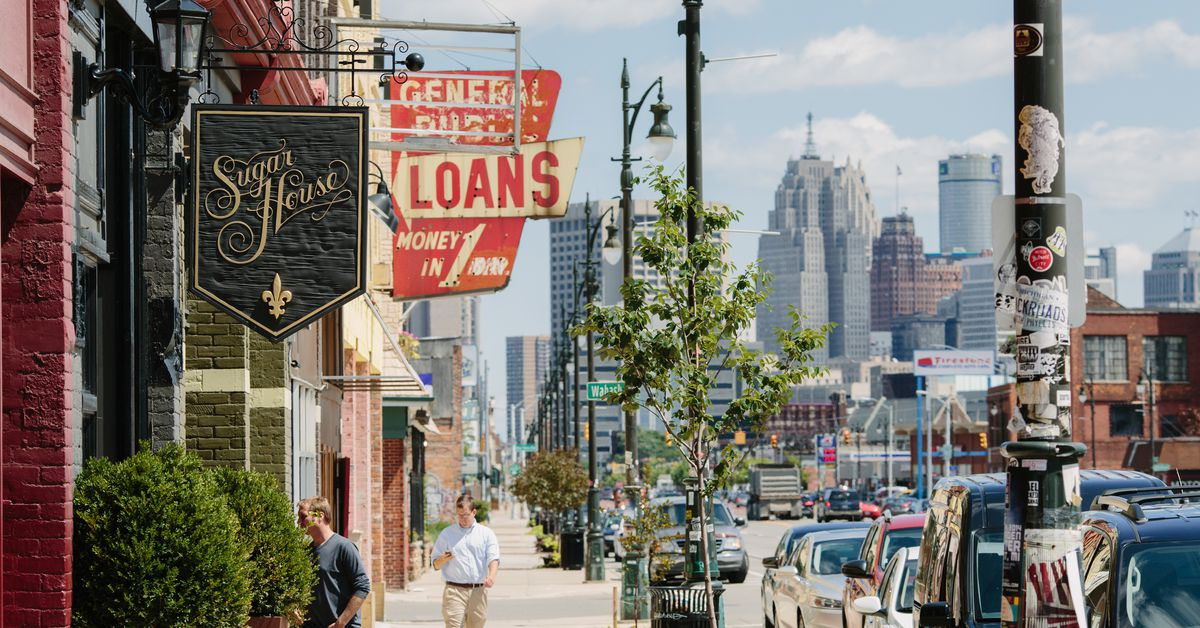Best 12 Things to Do in Detroit, Michigan
Over the past ten years, Detroit, Michigan, has changed from a struggling Rust Belt metropolis to a booming center of entertainment, cuisine, and culture. Detroit has a fascinating past as the birthplace of the American car industry and Motown music. Additionally, new investments have brought boutique hotels, cutting-edge dining options, and distinctive attractions to downtown and the neighboring districts.
Best 12 Things to Do in Detroit, MI (2025)
Campus Martius Park
Name & Location: Campus Martius Park is a public park located downtown at the corner of Woodward Ave & Michigan Ave.
History & Significance: Dating back to 19th century Detroit, Campus Martius today serves as a central community hub hosting concerts, markets, ice skating, and events throughout the year under the shadow of downtown skyscrapers.
What to Expect: Visitors relaxing in Campus Martius can grab food, play games, ride the carousel, cool off by the fountain, go shopping as they take in views of Detroit’s impressive architecture all around.
Visitor Information: Campus Martius is open 24 hours daily. Admission is free. The nearest parking garages charge a fee.
As downtown’s central hub, the 5.5-acre Campus Martius Park bustles year-round with special events and daily activities. People watch in the tree-shaded square, meet friends by the iconic Woodward Fountain, and take in jaw-dropping views of the city from the tubular Michigan Soldiers’ and Sailors’ Monument. Skate the rink in winter where you can stay warm thanks to downtown’s high rises and fire pits. Set up for a picnic lunch or catch a free performance or movie during the warmer months when the park becomes an urban beach. But swing through any time of year to access downtown’s shops and restaurants just steps away.
Architectural Tours
Name & Location: Guided walking tours in downtown Detroit and nearby neighborhoods explore the city’s legacy of ornate skyscrapers, factories, churches, theaters and urban sites while detailing the history behind Detroit’s evolving architecture.
History & Significance: As an early industrial American hub, Detroit contains excellent examples of Art Deco, Beaux Arts, Gothic and Romanesque architectural design from the late 19th and early 20th centuries during its golden era.
What to Expect: Tours visit the city’s most significant buildings, inside and out, while docents relate stories about the structures, designers, and firms that shaped Detroit’s skyline.
Visitor Information: Private and group tours can be booked through companies like Detroit Experience Factory and Preservation Detroit at various times. Rates start around $45 per person.
Detroit’s skyline is characterized by regal theaters, Art Deco skyscrapers, Victorian buildings, and other architectural gems. Take a knowledgeable guided walking tour of downtown to learn about the fascinating histories of the city’s buildings. Depending on individual interests, Detroit Experience Factory docents can customize excursions. Or go for a specialist excursion like “Detroit’s Flames,” “Beyond Baseball Stadiums,” or “Ty Cobb’s Detroit.” Families, organizations, and even architecture enthusiasts who want to see the lavish Guardian and Penobscot buildings can take advantage of private tours. The GM Renaissance Center’s breathtaking atrium is a must-see for anyone traveling alone.
Pewabic Pottery
Name & Location: Pewabic Pottery is located at 10125 E. Jefferson Ave. in Detroit’s East Jefferson Historic District
History & Significance: Founded in 1903, Pewabic is renowned for its handcrafted tiles and vessels created from unique iridescent glazes. Pewabic tile can be spotted decorating many noted Detroit buildings.
What to Expect: Guests can shop for pottery pieces in the galleries, take a tour to see working pottery studios, and learn about Pewabic’s historic methods and glaze chemistry through ongoing educational exhibits.
Visitor Information: Pewabic is open Tues-Sat. Guided tours run select days for $8 per person and should be booked online ahead of time when available.
Find out why, over the past century, tiles created at this venerable ceramic studio have graced iconic sites like the Sistine Chapel, the New York City Subway, and the Washington National Cathedral. Since 1903, the Pewabic Pottery, located close to Wayne State University, has been producing unique iridescent vases with earthtone-colored glazes. Make an appointment for a visit to observe resident artisans creating jewelry, architectural embellishments, and intimate dinnerware during weekday classes. Through their distinctive ceramic offerings, visitors can take a unique piece of Detroit history home from the on-site exhibit and shop.
Music and Performance Venues
Name & Location: Detroit is filled with fabled concert halls and theaters such as Fox Theater, Fillmore Detroit, Masonic Temple, Fisher Theater, Detroit Opera House, and others throughout city districts.
History & Significance: Detroit’s theaters and venues have showcased every musical great from Frank Sinatra to Lady Gaga while hometown Motown groups launched from these stages. Their mind-blowing architecture dazzles as well.
What to Expect: Fans can catch major touring concerts, Broadway musicals, standup comedy shows, orchestra performances and more at Detroit’s array of active venues, many built over a century ago during the city’s heyday.
Visitor Information: Event availability, showtimes and ticket access varies at each theater. Parking is generally available within proximity to most locations. Guided venue tours happen on occasion.
With Detroit’s booming theater and music scenes, Motown isn’t the only genre available to appreciate live. Inside its opulent 1928 movie palace auditorium, which is brimming with Indian, Asian, and Near Eastern design elements, the acoustically spectacular Fox Theatre presents stand-up comedy, touring musicals, and star concerts. Around the corner, the little Music Hall, which dates back to 1913, is filled with the sounds of emerging performers performing jazz, rock, pop, and country music. For progressive performances at the historic Fillmore or avant-garde theater inside the century-old Detroit Opera House, head north to Midtown. Additionally, the city is home to dozens of diverse taverns and nightclubs where you may find experimental performers and underground music.
Belle Isle Park
Name and Location: Belle Isle Park is a 982-acre island park located on the Detroit River about 3 miles east of downtown Detroit.
History and Significance: Belle Isle opened as a city park in the late 1800s after being purchased by the city of Detroit. It contains beautiful manicured gardens, historic structures, a conservatory, a beach, giant slide, trails, fields, and scenic river views.
What to Expect: Visitors come to Belle Isle for biking, hiking, walking, kayaking and relaxation surrounded by nature while still being in the city. Other attractions include the Anna Scripps Whitcomb Conservatory and the giant slide.
Visitor Information: Belle Isle is open daily 5am-10pm. There is a $12 annual fee for a recreation passport to drive onto the island, otherwise access is free.
Belle Isle is the ideal representation of Detroit’s dual character as a working-class, gritty city and a natural beauty haven. The 982-acre island park offers breathtaking views of the river, ancient buildings, and family-friendly attractions like a beach, aquarium, conservatory, and gigantic slide. To see the island at your own speed, rent a bike next to the Scott Fountain. On Saturdays, when East Jefferson Avenue is transformed into a pedestrian-friendly promenade, you may join the residents.
Eastern Market
Name & Location: Eastern Market is a large historic farmers market district in central Detroit spanning six blocks.
History & Significance: Founded in 1891, it is one of the oldest and largest continuously operating farmers markets in the United States, supporting local food growers.
What to Expect: Every Saturday, Eastern Market hosts an energetic open-air farmers market selling produce, meat, cheese and flowers. Many wholesalers are also open Tuesday-Sunday.
Visitor Information: Eastern Market sits between Gratiot Ave, I-75, Adelaide & Wilkins St. The area is busiest on Saturday mornings but shops open all week.
Since 1891, the city’s culinary center has been the historic Eastern Market in downtown. Admire the tall murals painted on warehouses that are currently used by supply wholesalers of vegetables, butchers, and spice merchants to service 300 individual sellers. When trucks bringing fresh produce arrive on Tuesday, come on in. Or come on a Saturday morning when 250 outdoor farmers and craftspeople sell a vibrant array of produce along with coffee, specialty cocktails, and ready-to-eat crepes. Don’t pass up the opportunity to have lunch at one of the greatest local restaurants in the city.
Detroit Institute of Arts
Name & Location: The Detroit Institute of Arts (DIA) is an art museum located on Woodward Ave in midtown Detroit.
History & Significance: Founded in 1885, the DIA has one of the largest and most significant art collections in the U.S. spanning over 3000 years of global creativity.
What to Expect: Visitors explore galleries featuring ancient, African, Asian, Native American, Islamic & European art, including the Detroit Industry murals by Diego Rivera.
Visitor Information: General admission is $14 for adults and $9 for youth. The DIA is open Wed-Sun with free entry on Wednesdays.
Find out why the expansive Detroit Institute of Arts is one of the country’s most important art institutions. There are about 70,000 cultural artifacts from around the world that span the last 6,000 years in this encyclopedic collection. Mesoamerican sculpture, Medieval tapestries, Modernist masterpieces, wandering Egyptian mummies, and much more. Experiencing these global treasures is made much more fulfilling by daily tours and interactive programming. And the finest of all? Residents of Oakland, Macomb, and Wayne counties are admitted free of charge.
Motown Museum
Name & Location: The Motown Museum is located at 2648 West Grand Boulevard in Detroit, in the original headquarters of Motown Record Corporation.
History & Significance: Founded in 1985, Motown Museum chronicles the story of Motown Records’ legacy through events and exhibits displayed in preserved recording studios where early hits were created.
What to Expect: Museum exhibits feature Motown history with photos, costumes, artifacts and more. Visitors can see the famed Studio A and other studios. Guided tours run frequently.
Visitor Information: The Museum is open Tues-Sun. Guided tour tickets are $20 and should be booked online in advance when available.
A visit to Hitsville, USA, is a must-do when in Detroit. From 1959 until 1972, this modest home produced more than 180 Top 40 hits including Motown artists such as Marvin Gaye, Stevie Wonder, The Supremes, and The Temptations. The earliest tracks recorded by these future Hall of Famers are visible to visitors standing in Studio A. Then take a tour of the upper floors, which have been meticulously conserved and include the apartment where Berry Gordy began his musical revolution seven decades ago. In 2023, a brand-new plaza, interactive displays, and amenities will open, allowing visitors to completely lose themselves in the Motown narrative and sound.
The Henry Ford Museum
Name & Location: The Henry Ford Museum of American Innovation is located in the Detroit suburb of Dearborn, about 10 miles from downtown Detroit.
History & Significance: Opened in 1929, and named for founder Henry Ford, the museum contains historic exhibits exploring 300 years of American innovation and ingenuity in various industries.
What to Expect: Museum exhibits feature transportation innovations, presidential vehicles, furniture, clocks, engines, Thomas Edison’s lab, historic American homes, and more.
Visitor Information: The Henry Ford is open daily. General admission is $28 for adults, $24.75 for seniors 65+, $21 for kids 5-11 yrs. Free parking onsite.
The expansive 300-acre indoor and outdoor historical campus in Dearborn offers enough educational entertainment to last several days. Train fans swarm to the historic Henry Ford Museum to watch model railroads and engines chugging past antique Americana displays. Visit the museum next door to see the actual Rosa Parks bus and Abraham Lincoln’s chair. Then experience a vintage carousel ride or get behind the wheel of one of the iconic Model Ts that transformed manufacturing. Before seeing the over 100 historic buildings in Greenfield Village’s four distinct districts, buckle up for an IMAX movie.
Comerica Park
Name & Location: Comerica Park is the home ballpark for the Detroit Tigers located at 2100 Woodward Avenue, just north of downtown.
History & Significance: Comerica Park opened in 2000 to replace historic Tiger Stadium. The open-air stadium anchors Detroit’s sports and entertainment area, also hosting concerts and events.
What to Expect: Baseball fans flock to Comerica on game days from April to September. Tours allow visitors to explore areas like the dugout when games are not happening. Concerts also take place during summer months.
Visitor Information: Parking rates and availability vary per Tigers game or event. Public stadium tours run in the offseason and cost $10 per person.
Watch the thrill of America’s favorite activity unfold throughout the bustling Woodward Corridor in downtown. From April through September, baseball fans swarm Comerica Park to support the Detroit Tigers. However, guests will also value distinctive elements like the Ferris wheel rides and the vintage-style carousel. When there are no planned games, guided tours allow you to visit the press boxes and opulent suites. After the last pitch is thrown, the ballpark district has some of the greatest nightlife and restaurants in the city.
Riverwalk & Dequindre Cut Greenway
Name & Location: The Detroit Riverwalk and Dequindre Cut Greenway are connected walking and biking paths located along the river and an old railroad line in central Detroit.
History & Significance: The Riverwalk connects Belle Isle to downtown while the Dequindre Cut spur heads north, linking Eastern Market to the riverfront. Both greenways enable recreation, exercise and transportation throughout the area.
What to Expect: Visitors can walk, jog, rollerblade or bike for miles along these paths while enjoying public art installations and city views, including a passage under/over a dozen streets and graffiti gallery.
Visitor Information: As urban trails, the Riverwalk & Dequindre Cut operate 24 hours for free public access all year.
Thanks to a network of pathways and pedestrian bridges that connect the city, you may walk (or ride a bike or scooter) between Eastern Market and downtown. From the Ambassador Bridge to Belle Isle, the paved Riverwalk connects parks, stores, and attractions along the Detroit Riverfront. The 1.5-mile length is lined with welcoming parks and public artwork. The Dequindre Cut Greenway, which runs north from Eastern Market, is a 2.0-mile below-grade rail route that has been converted into a woodland path that leads to hip enclaves and street art murals.
Corktown
Explore one of Detroit’s hippest and most historically significant neighborhoods as you go down the Michigan Avenue corridor. Experience the upscale eating scene in Corktown, which is driven by farm-to-table restaurants like Brooklyn Street Local, UFO Factory, and Mudgie’s Deli. After that, enjoy a specialty cocktail at the renowned Sugar House, which is nestled amongst small wine bars and cocktail lounges along Michigan Avenue as it is known in the area. Don’t be afraid to explore the side streets of this formerly Irish-majority neighborhood. Here, you’ll find stylish stores, cafes, pubs, and some of the city’s most popular eateries housed in renovated Victorian mansions and industrial-chic warehouses.
